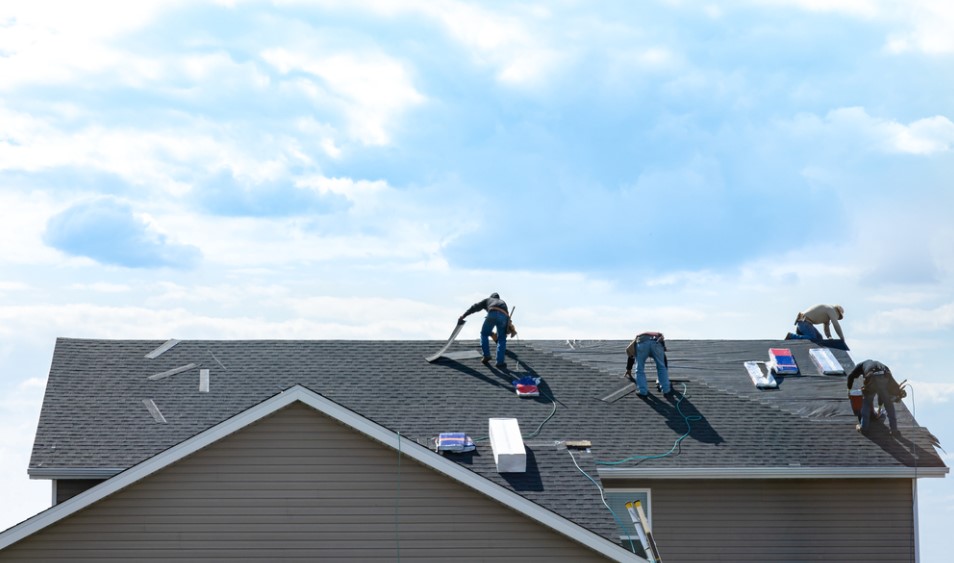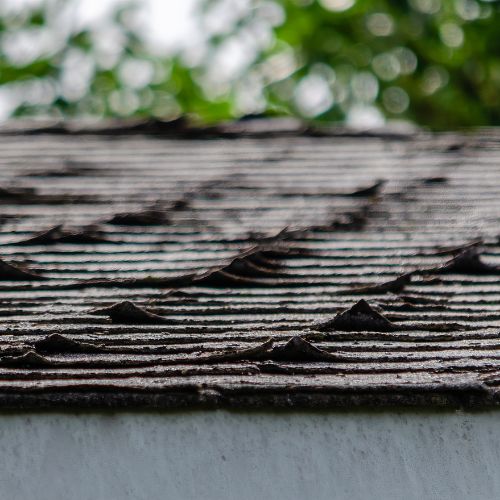Ultimate List for Examining the Problem of Your Roof Covering System and Identifying Possible Concerns
Evaluating the problem of your roof covering system is a sensible method for any kind of home owner aiming to guard their property financial investment (Keep Dry Roofing LLC). Normal analyses can reveal possible concerns prior to they intensify into pricey fixings or replacements. By complying with a detailed checklist tailored to review the numerous elements of your roofing system, you can get beneficial insights into its current state and preempt any kind of upcoming issues. This proactive strategy not just guarantees the longevity of your roof covering however also contributes to maintaining the architectural stability of your home.

Roofing System Evaluation Devices
These devices aid in detecting possible issues, analyzing the general problem of the roofing, and identifying the necessary upkeep or repairs required. One of the primary tools made use of in roofing assessments is a wetness meter, which helps determine locations of trapped dampness within the roof layers that might show leakages or water damages.

Furthermore, a digital video camera or mobile phone is crucial for documenting the evaluation procedure, recording pictures of any damage or areas of worry for additional analysis. Various other tools such as binoculars, roofing system probes, and security devices like harnesses and ladders are vital for a thorough and secure roofing system evaluation. By using these tools efficiently, inspectors can conduct comprehensive assessments, identify issues promptly, and recommend ideal remedies to keep the roofing's integrity.
Outside Roofing System Assessment
To extensively evaluate the problem of a roof system, an outside roofing system analysis is important to inspect the surface for indicators of wear, damage, or prospective concerns. During an outside roof assessment, it is critical to start by taking a look at the shingles or roof product.

Furthermore, assess the rain gutters and downspouts for clogs or damage that can lead to water backup and overflow onto the roof (Keep Dry Roofing LLC). Cut back any kind of overhanging branches that can scrub against the roofing system surface or offer easy access for pests. Lastly, assess the overall cleanliness of the roof, as particles build-up can maintain wetness and accelerate roof deterioration. By conducting a detailed outside roofing system evaluation, home owners can determine and deal with possible concerns prior to they escalate right into costly fixings.
Interior Ceiling Evaluation
Upon entering the interior space, a comprehensive assessment of the ceiling is important to identify any kind of indicators of water damage, leaks, or structural concerns. Beginning by aesthetically examining the ceiling for any staining, drooping, or pop over here peeling paint, as these can suggest water infiltration from the roof. Any type of stuffy smells or dampness in the air should additionally increase concerns concerning possible roof covering concerns.
Attic Assessment
An extensive inspection of the attic room is necessary in assessing the total problem and performance of the roof covering system. The attic functions as an essential element of the roof, supplying insights into potential concerns that might not show up from the outside or inside of your house. Throughout the attic exam, it is essential to inspect for signs of water damage, such as water discolorations, mold development, or rotting wood, which can indicate a leakage in the roofing system. In addition, examine the insulation for any kind of signs of degeneration or compression, as correct insulation is important for keeping power performance and stopping ice dams. Seek sufficient ventilation to guarantee that excess warm and wetness are being effectively ventilated out of the attic to stop moisture-related problems. Check out the attic room structure for any type of indications of drooping or damages, as these concerns can endanger the integrity of the entire roofing system. On a regular basis assessing the attic can help identify potential roofing problems at an early stage, permitting timely repair work and upkeep to extend the life expectancy of the roofing.
Addressing Usual Roofing System Problems
One of the most regular concerns home owners face is a leaking roofing, usually created by harmed or missing out on tiles, inappropriate installment, or tatty blinking. One more usual issue is roofing air flow problems, which can lead to excess heat and moisture buildup in the attic room, creating early deterioration of the roof covering products. Furthermore, the build-up of debris such as leaves, branches, or snow on the roof covering can obstruct drain systems and lead to water pooling, which may eventually cause roof covering leakages or structural damage.
Verdict
Finally, a detailed evaluation of your roof is vital to determine potential issues and make certain the total condition of your roof. By making use of the suitable tools and conducting inside, read what he said attic, and outside evaluations, common roofing issues can be resolved without delay. Routine upkeep and timely fixings can assist protect against considerable damages and extend the life-span of your roofing.
One of the primary tools made use of in roofing system examinations is a wetness meter, which aids identify locations of entraped moisture within the roofing layers that could suggest leakages or water damage. Other tools such as field glasses, roof covering Read More Here probes, and security devices like harnesses and ladders are vital for a secure and comprehensive roofing examination.To thoroughly examine the problem of a roof covering system, an exterior roofing system analysis is essential to examine the surface area for indicators of wear, damages, or potential issues. Evaluate the total sanitation of the roof covering, as particles buildup can retain wetness and increase roofing system degeneration. Keep Dry Roofing LLC. Additionally, the buildup of debris such as leaves, branches, or snow on the roofing can obstruct drain systems and lead to water merging, which might at some point trigger roof covering leakages or structural damages